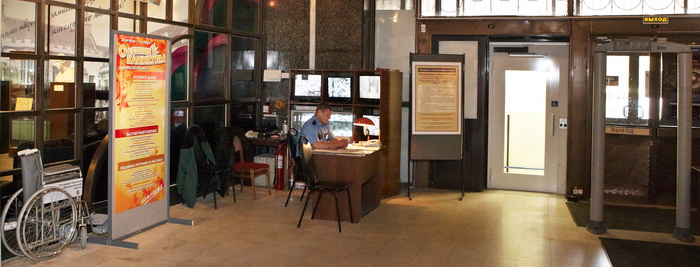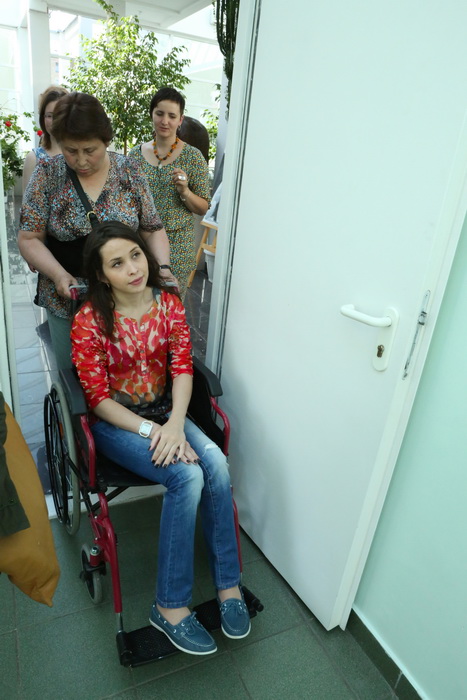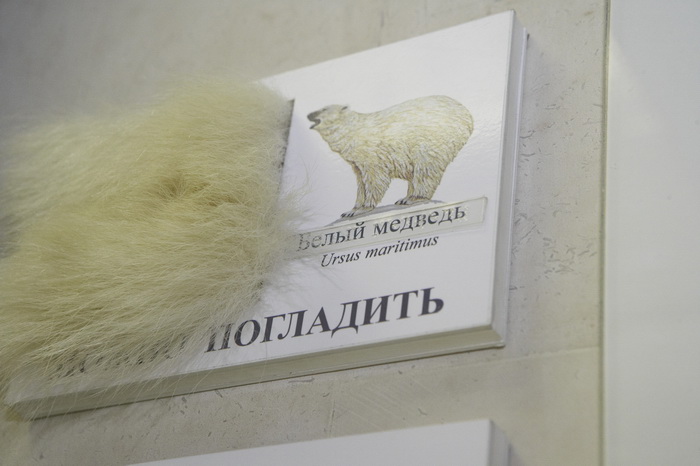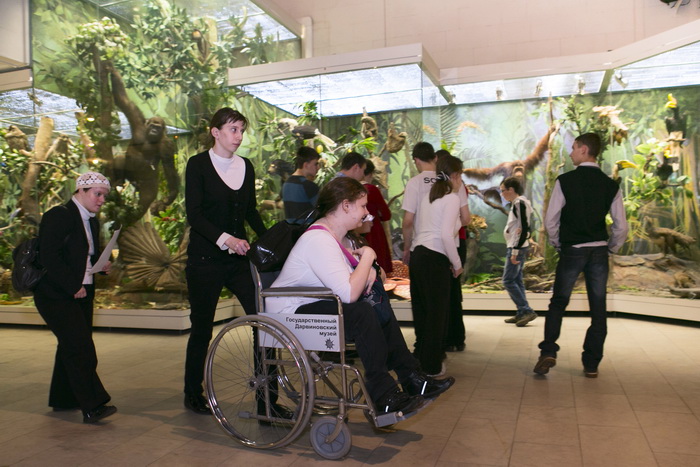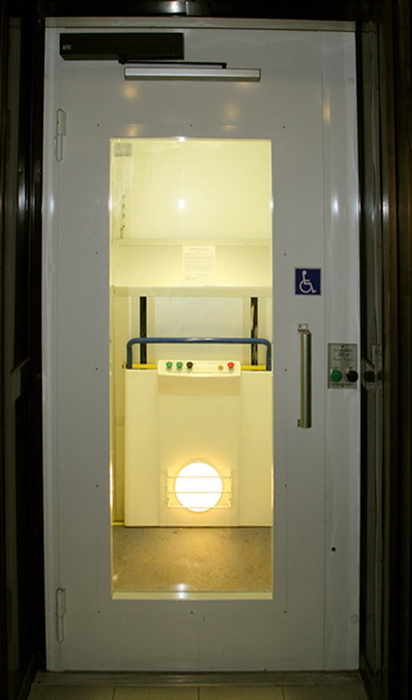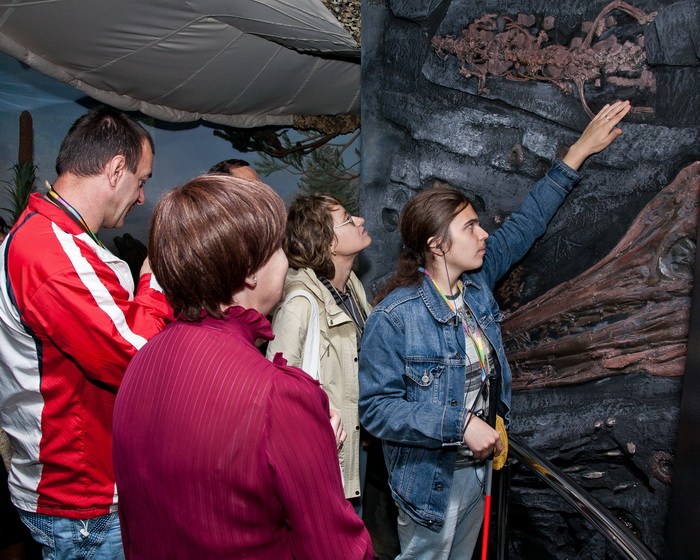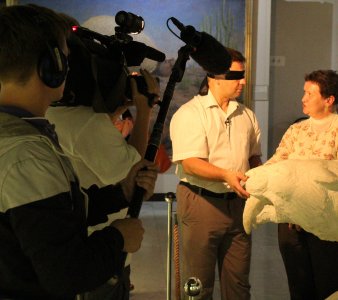
Video
14 November
2016
The
master-class “Sense the form” for deaf-blind visitors of the sculpture
exhibition “Co-creation” by Vadim Sidur. 10 December
2015
The contest
"The best family 2015" 11 November
2015
The
programme “World in hands”: master-classes for disabled children. 29 February
2012
A guided tour given to children by O. Tkachev
on the Rare Disease Day

Exhibitions are for everyone
The
exhibitions held at the State Darwin Museum are accessible for all categories
of disabled people. Each year the museum provides exhibition spaces for creative
works of people with various disabilities. Most exhibitions include
master-classes available for the disabled of different categories. Some of the
master-classes are given by the disabled experts.

Integration and adaptation of persons with disabilities
Educational
services have been offered at the State Darwin Museum for over 80 years. The
founder and the first director of the Darwin museum Alexander Fedorovich Kohts
gave many guided tours for blind students since mid 1920es. During the Great
Patriotic War, the museum was visited by different groups of injured and
disabled people. The director A.F. Kohts often worked with them personally. Currently,
the Museum regularly receives visitors with various forms of disability:
-
Mobility impairment
-
Hearing-impaired
-
Blind and visually
Impaired
-
Intellectual
disability and autismThe
director of the museum Anna Iosifovna Kliukina gives a guided tour for the
disabled visitors. The director of the Russian disability non-governmental
organization (NGO) “Perspektiva” Denis Rosa (in the centre) and the disabled
visitors: Natalia Prisetskaya and Valeriy Shkolnikov.The Darwin
museum is especially equipped for disabled visitors. If necessary, the museum
staff will assist you.There is a
special lift for visitors with mobility impairment and an especially equipped
toilet of a larger size.A special
route around the exposition was devised for blind visitors; the route includes
tactile study of sculptures and reconstructions of ancient people and extinct
animals. A number of
exhibits was selected for tactile study of the blind. These items reflect the
funds of the Museum, including the ones on display or inaccessible to public:
invertebrates, bones, stuffed birds and animals, pieces of fur of various
mammals.A number of
exhibits was selected for tactile study of the blind. These items reflect the
funds of the Museum, including the ones on display or inaccessible to public:
invertebrates, bones, stuffed birds and animals, pieces of fur of various
mammals.The State
Duma Deputy O.N. Smolin, visually disabled of the 1 group, examines a stuffed pangolin.Mr. Colin
Low, the President of the European Blind Union, examines the stuffed owl. The museum
regularly hosts exhibitions, presenting the works of artists with disabilities
and children with autism and delayed development. The achievements of the
museum in the field of creating a comfortable environment for disabled persons
was marked at the “REHA-2003” exhibitions in Düsseldorf (Germany), and at the
Sokolniki exhibition complex in Moscow (the “Invatekh-2003”, “REHATECH-2005” events).
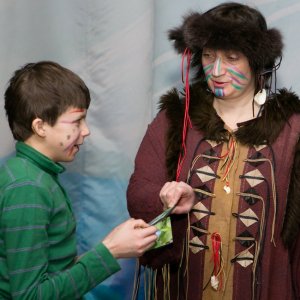
Interactive classes for disabled visitors
The museum
developed and holds interactive classes for children and adult audiences.«Our six-legged planet neighbours»An
interactive class in the museum’s insectariumThe class opens
the wonderful and diverse world of insects. Large bright beetles and tropical
butterflies. Inhabitants of our parks, gardens, forests and meadows. Rare and
protected species. Live insects including cockroaches, stick insects, grasshoppers,
crickets, and other kinds. Members of the class can hold them in hands.Animals and birds of RussiaAn
interactive class in the exposition
The class teaches about typical representatives
of the animal world in Russia, and characteristics of Russian natural areas. This
activity continues and complements the topics of standard school lessons (for
example, biology and geography). The planet of plantsAn
interactive class held in the museum’s greenhouse and the environmental path
area.

Festivals for everyone
The
disabled persons of all categories can participate in all public events held by
the State Darwin Museum. Such events usually include creative and educational
contests of varying difficulty, games, master-classes, concerts, film
screenings and performances.
The staff of the State Darwin Museum will
gratefully consider any suggestions that would improve the visit of persons
with disabilities of different categories.
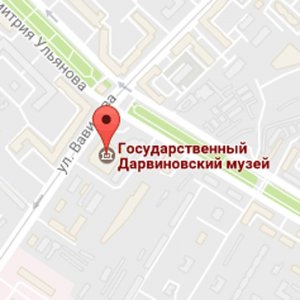
How to find us
Address: Moscow, Vavilova Street, 57
The museum
can be reached by car and public transport. There is a parking space with
special lots for disabled visitors.
On footBy car →By tram and bus (metro stations “Universitet”
and “Leninsky Prospekt”) →On foot from the “Akademicheskaya” metro
station
The metro
station “Akademicheskaya” (first car from the centre). It takes about 15 mins
to get to the museum on foot (1200 meters).Use the
stairs or escalator to reach a passage and then turn right Walk along
the passage and turn right again to the exitLeave the
passage on Profsoyuznaya Street, walk forward until the crossroad and turn left
onto Dmitriya Ulianova StreetWalk
forward along Dmitriya Ulianova Street for about 10-15 mins (there are
controlled intersections)The main
entrance from Dmitriya Ulianova StreetBy car
Driving
into the parking space from Vavilova StreetThere are
parking lots to the left and right sides of the entrance gates and opposite the
exhibition halls of the museum.By public transport (tram and bus)
Trams № 14 and
39
The stop is
“Darvinovskiy muzey” (the Darwin museum)Passengers
from the centre will need to walk across the controlled intersectionThere is a
stop for buses № 119, 529, 434, 57
The stop is
“Darvinovskiy muzey” (the Darwin museum)
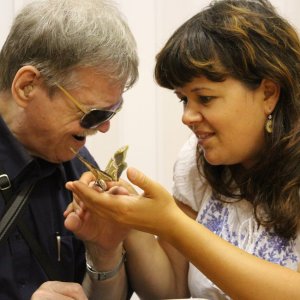
Special programs
“Museum without barriers”
The program is devised for disabled visitors of
all categories. It includes exploring the main exposition of the museum as well
as interactive centers “Cognize yourself – Discover the world”, “Walk the Path
of Evolution”, guided tours and interactive classes“Special visitors”
The program
is developed for visitors with autism and members of their families. “The world in hands”
Educational
activities and interactive classes for deaf-blind and visually impaired
visitors. The project
is implemented with the support of the Non-state establishment “Institute of
professional rehabilitation and personnel training of the all-Russian public
organization of disabled people – the all-Russian Order of the Red Banner of
Labour of the society of the blind “Rehacomp”.
Disability
should be considered as a part of human life and regarded with an adequate
respect, care and attention to the disabled part of population.
The main
idea of service provided for the disabled in the Darwin museum is creating a
comfortable environment for visitors with disabilities to enjoy the process of exploring
the beautiful world and taking part in various educational activities and
events held at the museum.
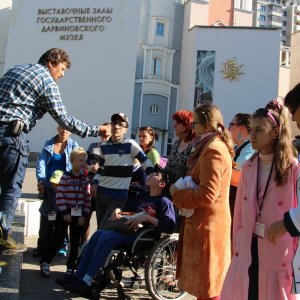
Excursions for everyone
The museum
offers adapted guided tours for disabled persons of all categories, including
visitors with combined pathologies (children and adult audiences).
1.
Specialised excursions and classes for visitors with disorders of mental
development and particular characteristics of emotional response. A special
program is devised to meet individual needs of each group.
2. A
comfortable route around the exposition is prepared for visitors with mobility
impairments.
3. General
and thematic excursions around the main exposition and classes for blind,
visually impaired and deaf-blind visitors are conducted using the tactile
didactic material.
4. There
are services of an interpreter for visitors with hearing impairment available
during guided tours and classes. A guided
tour for visitors with autism.A quest at
the temporary exhibition “Birds. Technology of perfection”. An
interactive class with insects in the museum’s insectariumA general
excursion around the main exposition Thematic tours
“Wonderful world of the planet Earth”
A colourful
variety of the animal world on our planet including inhabitants of tropical
forests, savannas, highlands, seas and oceans as well as visible and invisible
connections between them.“Predators”
Typical
characteristics of predators, specialised orders, hunting tactics, characteristics
of individual representatives living in different places on Earth.“Six-legged planet neighbours”
This
activity opens the wonderful and diverse world of insects. Large bright beetles
and tropical butterflies. Inhabitants of our parks, gardens, forests and
meadows. Rare and protected species. Live insects including cockroaches, stick
insects, grasshoppers, crickets, and other kinds. Members of the class can hold
them in hands.“The world of plants”
The world
of plants is not less diverse than the world of animals. An extraordinary
beauty of a flower and unusual shape of leaves, roots and stems often imply
particular means of survival in a natural community. A guided tour around a
wonderful greenhouse of the museum will reveal for you the secrets and
mysteries of plants. “Environmental Path”
This
activity includes exploring inhabitants of the modern metropolis (animals,
plants, mushrooms).











